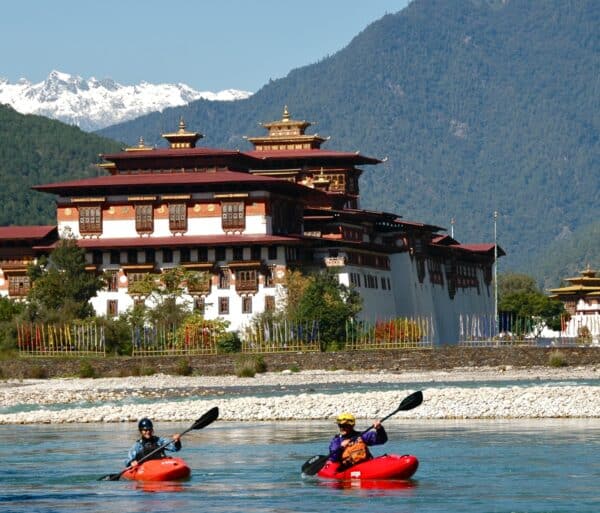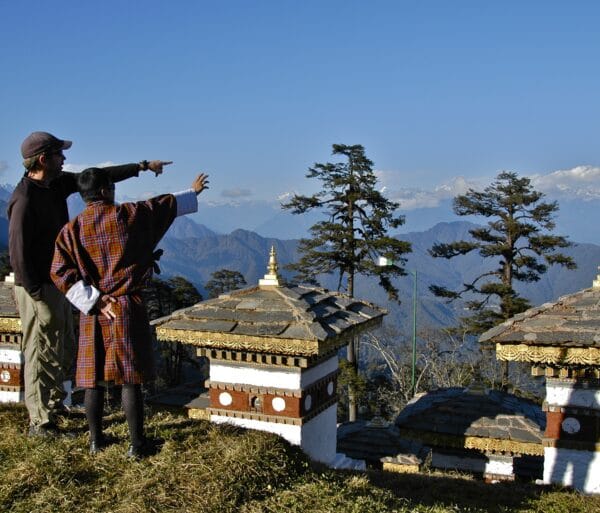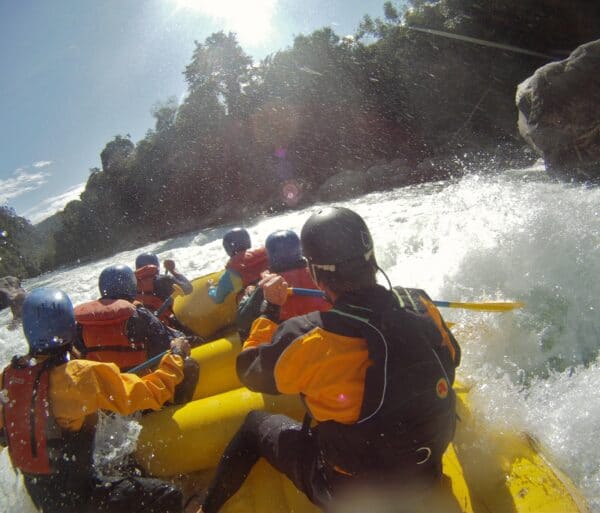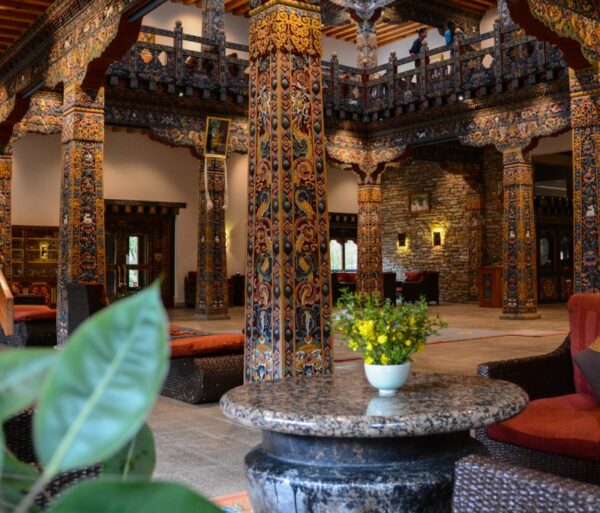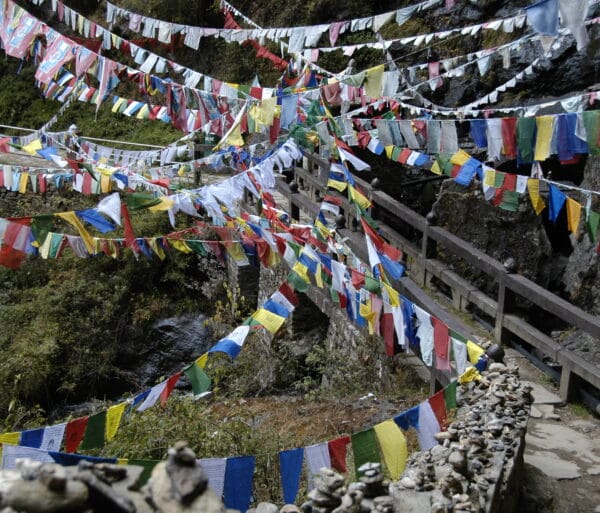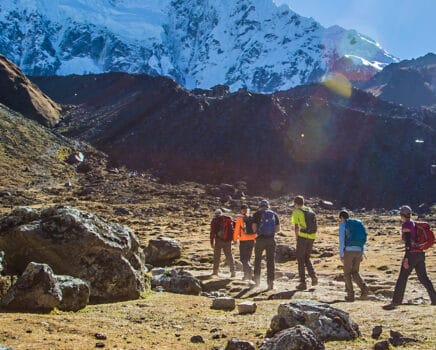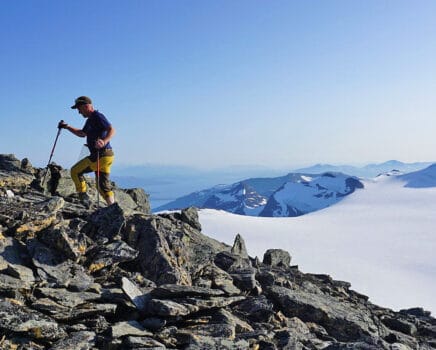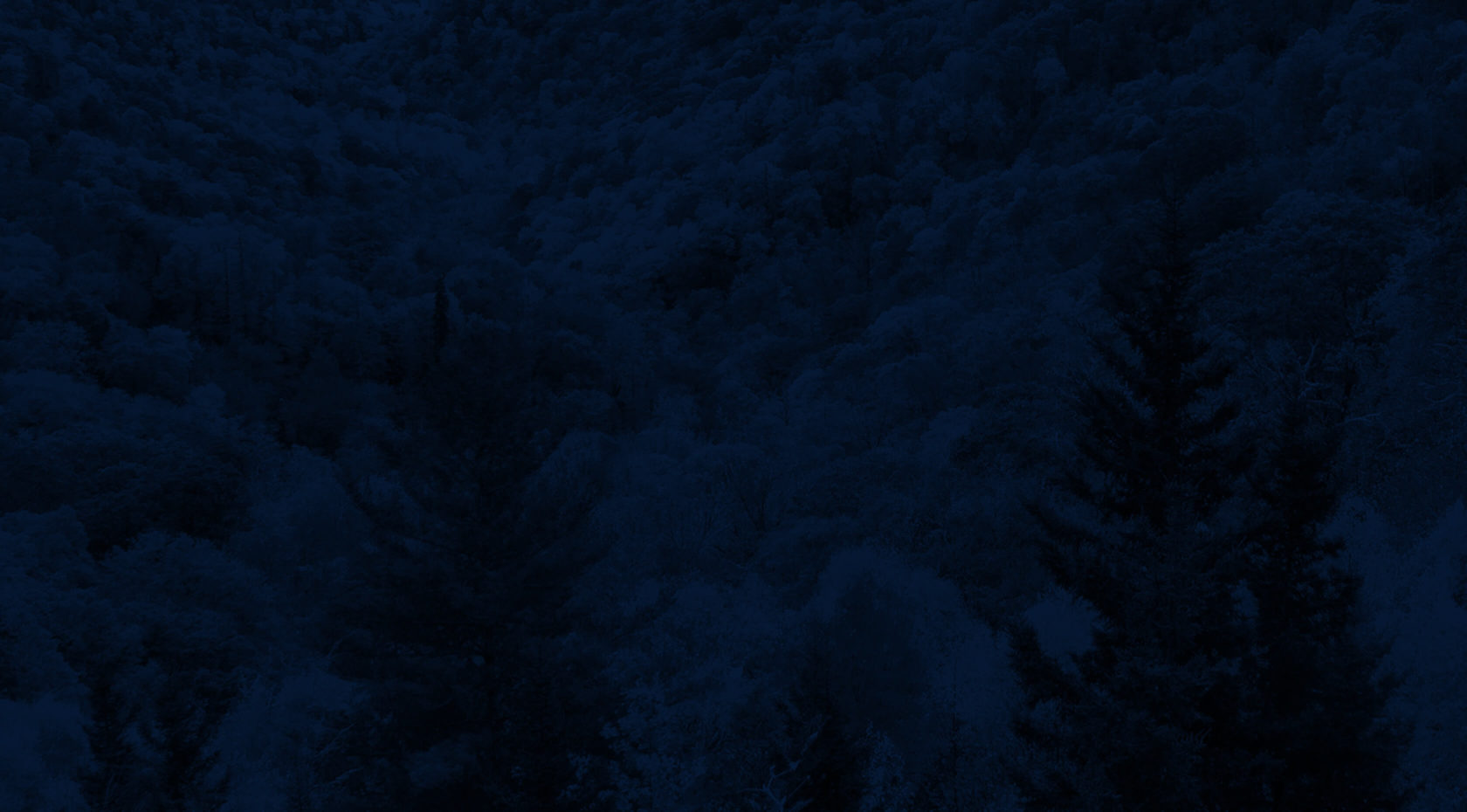
Asia: Bhutan Explorer & Multi-Sport
Explore the sights of Bhutan. Paddle, hike and bike through the remote wilderness, and stay in tented safari camps and Bhutan’s finer hotels.
Overview
Bhutan is no ordinary place. It is the last great Himalayan kingdom, shrouded in mystery and magic, where a traditional Buddhist culture carefully embraces global developments.
Bhutan holds many surprises. This is a country where the rice is red and where chilies aren’t just a seasoning but the main dish. Its Buddhist heritage and practices also run deep with protected traditions. The Bhutanese well educated, fun loving and well informed about the world around them. It’s this blending of the ancient and modern that makes Bhutan endlessly fascinating.
This trip combines the best in adventure and culture. Spend your days mountain biking, rafting, and kayaking the rivers and valleys balanced with exploring the rich legacy and history. Explore dzongs and beautiful Bhutanese architecture and all the local treasures this country has to offer like the Tiger’s Nest, Paro, Thimpu and the Cave of a Thousand Prayers.
Paddlers will enjoy the Paro Chhu’s continuous class III-IV whitewater and steady drop in elevation and technical drops or raft the Pho Chhu and Mo Chhu River Valleys. Guests can also visit Dochu La Pass and Paro Valley for a descent of epic proportions.
Retreat after a full day of adventuring and taking in the sights in both cozy camps and top tier hotels. You’ll stay at deluxe safari tented camps similar to the tented camps in Africa. Lookout onto the surrounding 20 acres of beautiful and have orange and banana tress throughout the grounds with stunning 360-degree mountain views, private and perfectly located for exploring the region.
Adventures in Bhutan will leave you feeling revived, restored and wanting to come back for more.
Example Itinerary
- Visit Dochu La Pass and optional cycle downhill for almost 6000 vertical feet
- Tour Temple of the Divine Madman, textile an folk heritage museums, Tashichho, market and world largest Buddha
- Relax in our deluxe tented safari camp on the banks of th Mo Chhu River
- Raft, kayak, hike or mountain bike the Pho Chhu and Mo Chhu river valleys
- Optional paddle of Paro Chhu river
- Trek to Limbukha and Chungsakha
- Sightsee in Paro, Thimphu, visit Chele La Pass for biking/hiking to a nunnery and sky burial
- Trek to Bumdra and overnight below Cave of a Thousand Prayers
- Trek to the Tiger’s Nest
- Wrap up night in Paro at Zhiwa Ling, Paro’s most authentic top-tier hotel
Trip Details
- Flights : BKK-PBH-BKK (Economy). Upgrade to Business Class additional US $150 and subject to availability at the time of booking confirmation
- All Bhutanese Government Visa Fees, Taxes and Royalties
- All activities as outlined in itinerary
- Accommodation on a full board basis throughout (excluding beverages, laundry, tips & gratuities and any other personal expenses) at standard/deluxe lodges/hotels, safari camp in Punakha or while on Trek and 1 night at Zhiwaling. Rooming will be based on twin/double occupancy
- An experienced English-speaking Bhutanese Guide.
- Entry permits and fees.
- All in-country transport including airport transfers.
- Bottled water on all days in vehicles
DAY 1 – Arrival at Paro International Airport. Transfer to Thimpu and sightseeing around Thimphu.
Your local guide will receive you at the airport and accompany you for the scenic drive along the Paro Chhu and The Wang Chhu passing countless traditional farmhouses and fine examples of traditional Bhutanese architecture on the way to Thimpu. The drive takes about an hour but those wishing to test their hand at continuous class III-IV whitewater kayaking will enjoy the Paro Chhu’s steady drop in elevation and technical drops.
The capital city of Thimphu is a lively town where the old traditional ways are trying to survival and co-exist with the emergence of modern and western ways of life. After we check in at the hotel, sightseeing begins. Some of the sites to visit in and around Thimphu will be The National Memorial Chorten, Tashichho Dzong, the National Textile Museum, the Weekend Market, the Folk Heritage Museum, or a quick visit to Kuenselphodrang where the world’s largest sitting Buddha is located.
Overnight: Galingkha Thimpu
DAY 2 – Saturday Punakha Valley via Dochu La, Chimmi Lhakhang
Late morning we head towards the Punakha Valley. We’ll lunch a the top of Dochu La Pass (3140m) where on a clear day one gets a panoramic view of the eastern Himalayan range. Those wanting to mountain bike down to the valley will be treated to 6000 vertical feet of winding road and climatic changes as you descend into jungle-like conditions.
Once in the valley bottom, we will take a short walk across a couple of village homes and rice paddies to Chimmi Lhakhang; aka “Temple of the Lam Drukpa Kuenley – The Divine Madman”. Duration of drive time: 3 hours (76km) Tonight we will overnight at Buddha Camp on the banks of the Pho Chu River in Punakha
This deluxe safari tent camp is reminiscent of our tent camps in Africa. The surrounding 20 acres are beautiful and have orange and banana tress throughout the grounds and magnificent 360-degree mountain views. Most importantly it’s very private and ideally situated for exploring the region.
DAY 3 – Hike, Raft (or bike) and Punakha Dzong
After a gourmet breakfast we have some options to raft the upper and lower Pho Chu canyon and/or ride some extended single track in the same valley (joining the rafts in the afternoon for the lower Pho Chu’s class II/III section). The mountain bike ride rolls through pine forests, small local villages, and paddy fields until you reach the put in for the lower Pho Chhu at Samdenkha.
The scenic raft trip down the lower Pho Chhu takes about 2 to 2 ½ hrs with stops and ends with a classic float past the majestic Punakha Dechenphodrang Dzong located at the confluence of the Pho Chhu and Mo Chhu rivers. The Punakha Dzong is a true a masterpiece of Bhutanese architecture built in 1637 by Shabdrung Ngawang Namgyal. Today the dzong serves as the seat of the local government and the winter home of His Holiness the Je Khenpo, the head abbot of Bhutan.
Overnight Buddha Camp.
DAY 4 – Raft, or Bike, Hike, Sightseeing
Drive to the put in of the class III/IV section of the Mo Chhu and raft the scenic canyon of the upper Mo Chhu down to base camp. Lunch at the take out. After lunch short hike through homesteads and farmlands to the Khamsum Yulley Monastery; a temple built by Her Majesty the Queen Mother for the long life of His Majesty the 5th King of Bhutan. If time permits a nice scenic drive and visit to the Sangchhen Dorji Lhuendrup Lhakang which was consecrated in October 2010 and houses one of the biggest statues of Avalokiteshvara – “The Buddha of Compassion”.
Overnight Buddha Camp.
Day 5 – Trekking to Limbukha
Today’s trek starts just beyond the Punakha Dzong as we cross the longest suspension bridge in Bhutan, which runs over the Pho Chhu River where we rafted the day before. The first part of the climb is gentle and gradual as we hike through terraced fields. After a couple of hours of walking through pine forests we stop for lunch and enjoy outrageous views of the Punakha Valley and Himalayas. At the end of the day we will have reached the village of Limbukha and tonight’s remote wilderness camp complete with dining tent and fantastic Bhutanese hospitality.
Day 6 – Trekking to Chungsakha
The hike starts off steep until you reach the first ridge. Crossing into a different valley and over several streams, the hike goes through oak and more rhododendron forests. The final descent takes us into the quaint village of Chungsakha where we meet our drivers and shuttle back to Phobjikha for a little sight seeing and exploration. There will be an option for people to mountain bike back as well.
Overnight Punatsang Chhu Cottages
DAY 7 – Sight seeing and transfer to Paro
Morning drive to Paro. Visit Rinpung Dzong, Ta Dzong, Paro Town & Kyichu Lhakhang . Visit the Ta Dzong, which houses the National Museum (open Tuesday-Saturday) with magnificent views over Paro, and on the way down visit Rinpung Dzong – ‘Fortress on a Heap of Jewels’. Also visit the Kyichu Lhakhang one of the oldest temples in Bhutan and was built in the 7th century by the Tibetan emperor Songtsen Gampo and is one of the 108 temples built by him. In the later part of the afternoon one can spend time trying out the local sport of Archery with traditional bows and arrows.
Overnight : Tenznling
Day 8 – Chele La Pass and hike to Kila Nunnery
Today we will have an early start as we drive to Chele La Pass, which at 3988m (12499 ft) is the highest road pass in Bhutan, snaking upwards through blue pine and rhododendron forests for 35 kilometers. On a clear day the view sweeps away to the snow dome of Bhutan’s second highest peak Mount Jhomolhari (7314m or 23,996 feet)) and down the Haa Valley which only opened to foreigners in 2002. This unspoiled valley harks back to a simpler more traditional time. This valley offers Bhutan’s best fly fishing for snow trout and brown trout.
Striding out along the Edelweiss-covered ridge, we pass a sky burial site. Descending for two hours through dense rhododendron forest and shaggy yaks, to Kila Goemba, an ancient nunnery nestled in a craggy patch of the mountainside below. Kila Goemba is a serene retreat for 32 Anim (Buddhist nuns) who lead an undisturbed life of religious studies, prayer and meditation. The nunnery is one of the seven oldest nunneries in the Kingdom. Dipthob Chhoeje Norbu and Dupthop Temba initially established it in the early ninth century as a place for meditation, After being destroyed by a fire , the Lhakhamng was reconstructed by the 25th Je Khenpo, Sherab Gyaltsen and in 1988, the government officially established Kila Goenmba (monastery). This sacred pace has a timeless quality which is ample reward after the efforts of the hike and as about as far off the beaten path one can get.
An hour later, we are back on the road and bikers can saddle up for a mountain bike descent of epic proportions all the way down to the to Paro Valley.
Overnight Tenzinling
DAY 9 – Trek to Bumdra
Hike from Sang Chhoekor Monastery to a yak pasture below Bumdra (“Cave of a Thousand Prayers) at 3800m. The first 2-hour ascent up a ridge is steep at times and then brings us to a clearing with spectacular views of the Paro Valley below. About an hour ahead nestled into the mountainside is Chhoe Tse Lhakang. The undulating trail up to the temple offers commanding views of the Paro Valley to the south and snow-capped Eastern Himalayas to the North. The final climb through prayer flags and ruins takes us back into a forest and then out to a high altitude alpine meadow dotted with chortens and prayer flags.
Tonight’s camp is just below the Bumdra Monastery and offers magnificent views of the Himalayan range. Your tents will be set up for you and we will have a walled tent dining hall along with portable privy. Hot water will be available for washing up before a surprisingly delightful dinner. After settling into camp we can either visit the monastery if the caretaker is available and also climb the peak to the north (about 4000m) for even better views of the mountains
Duration: Approx 4-5 hours to camp Difficulty: Moderate to Hard Overnight: Camp at Bumdra
DAY 10 – Trek to Tiger’s Nest
Trek from the meadows below Bumdra Monastery at 3800m via Zangtopelri Monasteries to Taktsang Monastery aka “Tiger’s Nest” at 2900m and back down to Paro
After breakfast, linger awhile and enjoy the breathtaking views before heading back out onto the trail through pine and rhododendron forests. A two-hour descent lets us catch glimpses of the roofs of some temples below. The path then winds across the mountainside between the monasteries and temples before reaching the gardens of Zangtopelri from where you can see the roofs of the Taktsang Monastery perched on a cliff below.
This backdoor approach to the Tiger’s Nest is not your usual tourist route and is well worth the effort. Another half hour of scrambling and a dramatic climb down some old ladders sets the stage for an amazing view of Taktsang Monastery aka The Tiger;s Nest. After an incredible visit we will work our way down the more traditional trail head to reach our shuttle
Duration: 5 – 6 hours depending on time taken in monasteries Difficulty: Moderate – Although not very comfortable, riding ponies are available upon request. Overnight: Zhiwaling
DAY 11 – Departure
Morning drive to the airport to catch your flight out of Bhutan
Le Meridien Paro, Riverfront
The perfect destination which offers life time opportunity to live and experience the country’s exotic culture and natural beauty with a mix of luxury and comfort. Situated on the edge of the Paro River, offering panoramic views of the Eastern Himalayas, makes it a perfect stopover for anyone visiting Bhutan. Our 59 guest rooms, including seven suites, are chic retreats designed with the curious traveler in mind.
Le Meridien Thimphu
Located at the heart of Bhutan’s capital city, the hotel is just steps away from shops and entertainment, and conveniently accessible to Memorial Chorten, Tashichho Dzong and other celebrated attractions. Elegant guest rooms boast authentic Bhutanese-style furnishings and stellar amenities like flat-screen TV, free high speed wi-fi, marble bathroom, an ergonomic workspace and uncompromising views of the local hillsides and the capital city .
Zhiwaling
Zhiwa Ling, means “Land of Peace”. This 45-room hotel faces the sheer rocky cliffs that surround Tiger’s Nest Temple, a strategic position believed to bring good fortune to those who spend the night. Built in the classic Bhutanese style of heavy tapered stone walls with fine, hand-painted façade details, the main building and eight two and three-story cottages hold their own against the soaring peaks. Dramatic lighting gives the entire 10 acre property a particularly regal flair at night. Bhutan’s rich weaving heritage appears as attractive bedcovers and drapery in the guestrooms, all equipped with WiFi and Swedish under floor heating. Upstairs in the main building, a Buddhist shrine constructed with 450-year-old wood from a remote monastery adds good karma. With its stone fireplace and light wood furnishings, the Mad Monk Bar has the après ski vibe of a Swiss chalet. No one comes to Bhutan for the food but cooked organic salads like the indigenous red rice and corn with artichoke hearts taste especially delicious to travelers used to skipping greens on Asian adventures. Other notable amenities include a tea house and meditation chamber.
Why Bhutan? And….where IS that anyway?
After the plane makes its steep descent along the Himalayas it touches down in Paro Valley (2280m) and you might feel like you have entered a world you only hoped had existed.
Bhutan, officially the Kingdom of Bhutan, is a landlocked state in South Asia, located at the eastern end of the Himalayas and bordered to the south, east and west by the Republic of India and to the north by the People’s Republic of China. Bhutan is separated from the nearby country of Nepal to the west and from Bangladesh to the south by the Indian states of Assam and West Bengal.
The capital city of Thimphu (2320m) has a youthful exuberance and the mix of traditional and modern are an essential part of its charm.
The drive from Thimphu to Punakha, along the National highways and over the Dochu La, leads from the cool heights of Thimphu to the balmy, lush landscape of the Punakha Valley. The route climbs through apple orchards and forests of blue pine to the Dochu La (3140m) marked by an impressive amount of prayer flags and 108 chortens (receptacles for offerings). On a clear day, the pass offers panoramic views of the Bhutan Himalayas. The road descends steeply and the vegetation changes dramatically from oak, maple and pine to rhododendron, alder, cypress, hemlock and fir. The air gets warmer and the environment increasingly tropical with the appearance of cactus and bamboo.
Punakha sits in a sultry, beautiful and fertile valley at the junction of the Mo Chhu (mother River) and Pho Chhu (Father River). The gorgeous Punaka Dzong takes its throne at the confluence of these two rivers. Here we have a chance to break out the water-wear and fat tires as there are numerous rivers to raft or kayak and bike trails to enjoy no matter what your ability.
Dates
Location
Address
Thimphu, Bhutan
